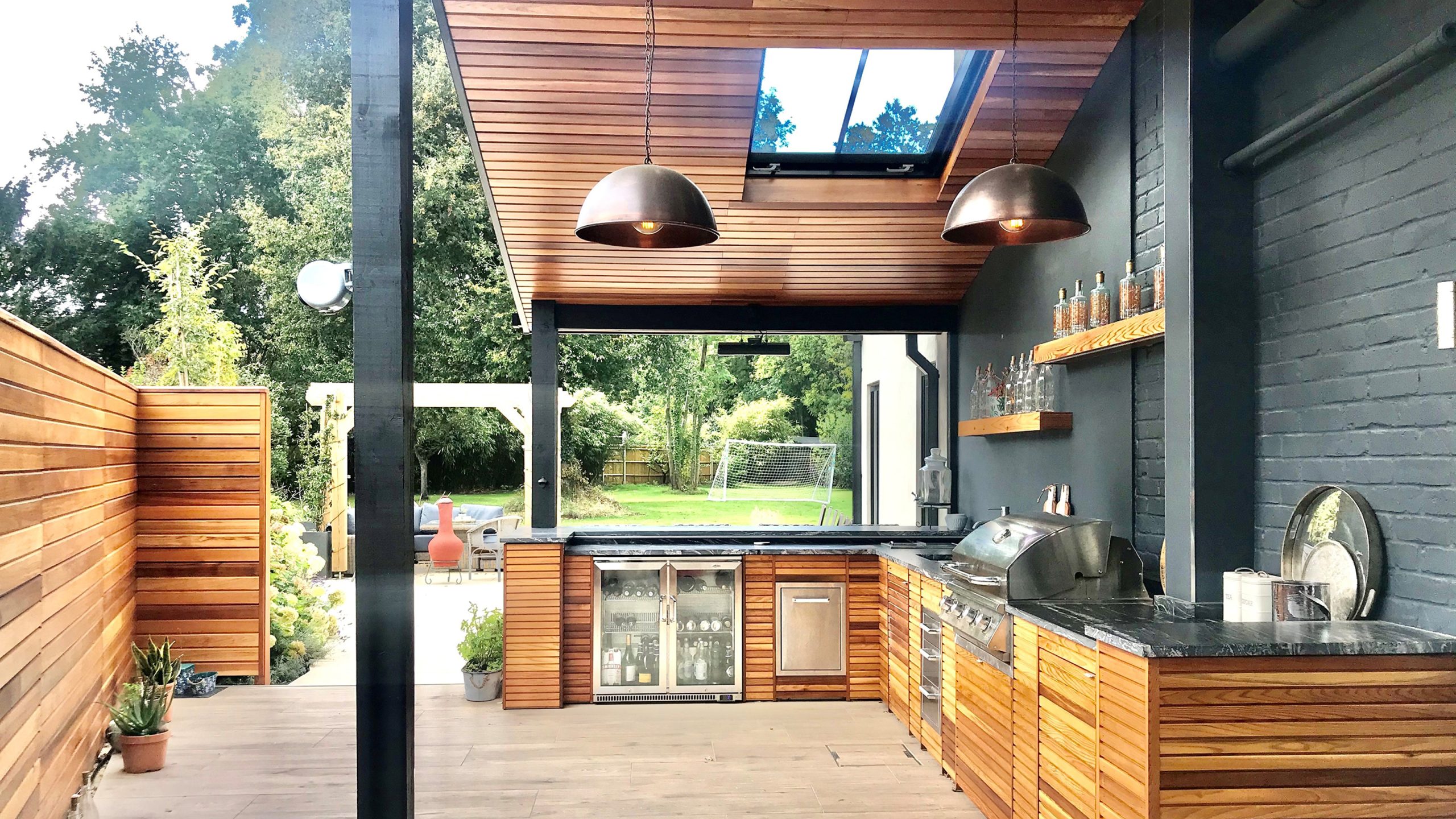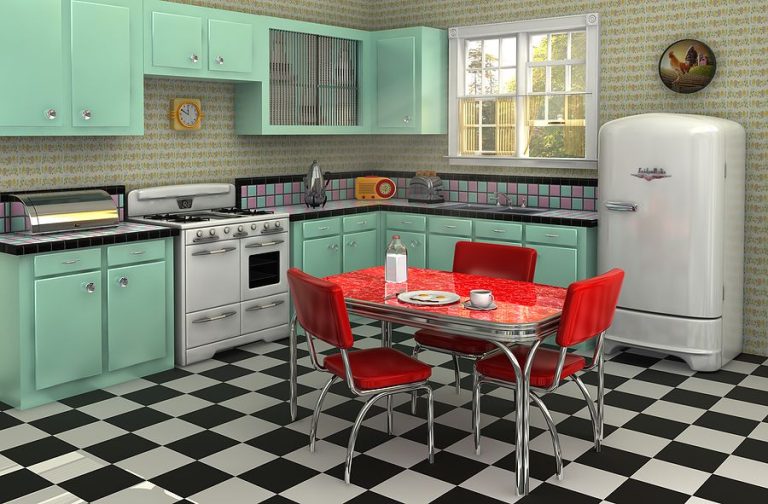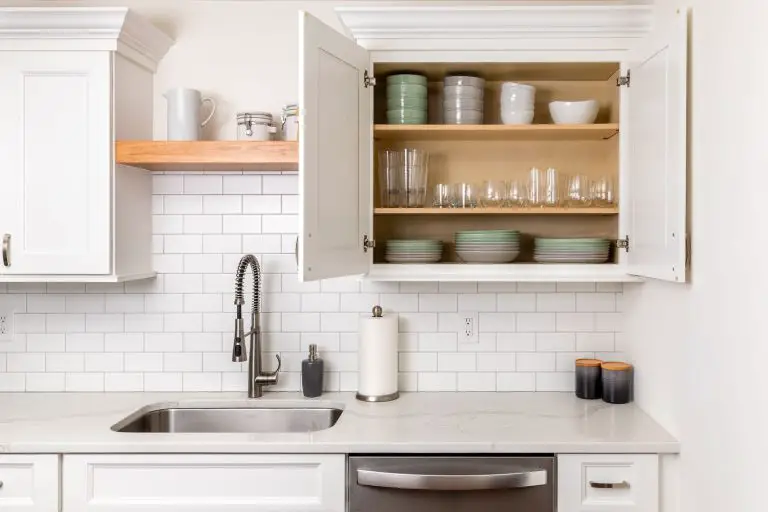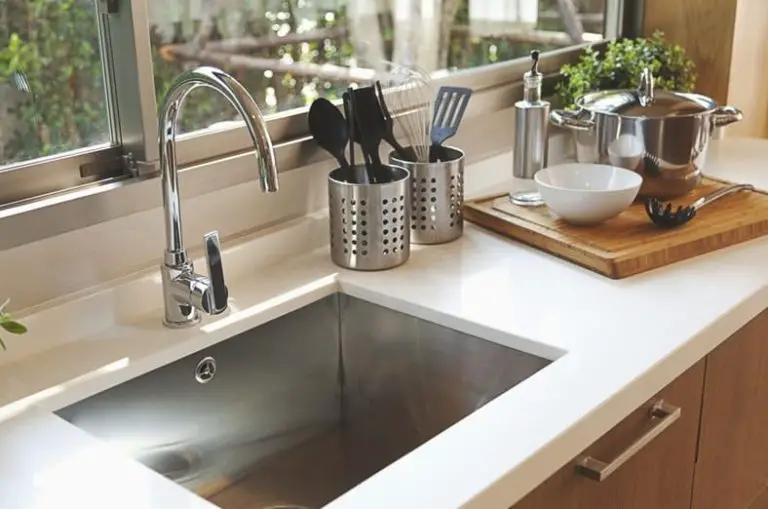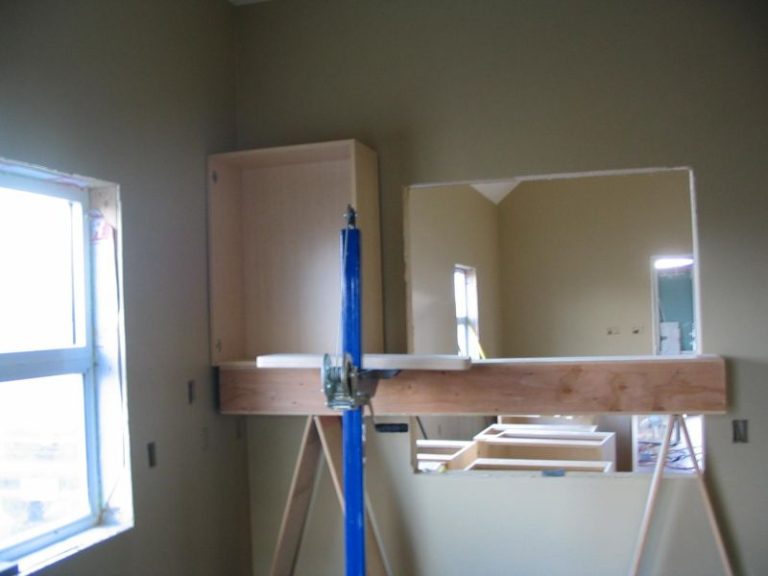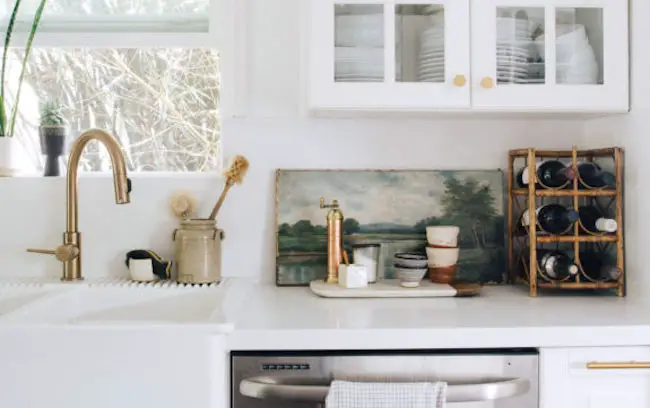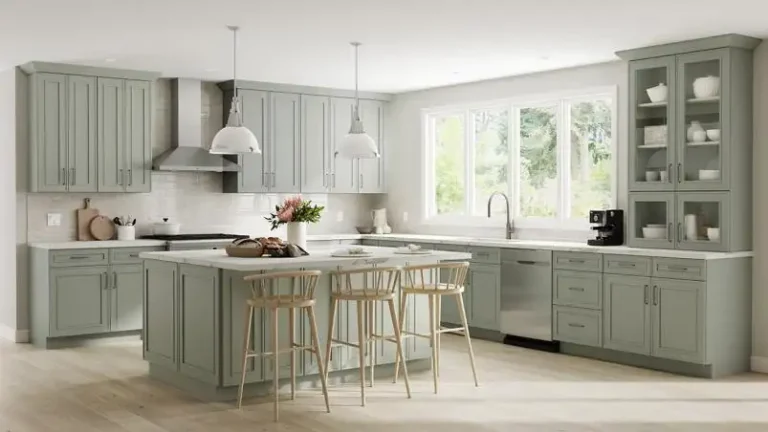What Is The Best Surface For An Outdoor Kitchen?
An outdoor kitchen is a great way to expand your living space and create an area to entertain family and friends. With the right design, you can make your outdoor kitchen a beautiful and functional space. One of the most important elements of an outdoor kitchen is the surface. Choosing the right surface can make all the difference in how your outdoor kitchen looks and functions. The best surface for an outdoor kitchen is one that is durable, weather-resistant, and easy to clean. Stone, concrete, and tile are all great options for an outdoor kitchen surface since they are highly durable and can stand up to the elements. Additionally, these surfaces are easy to clean and maintain. No matter your budget or style, there is a surface that will work best for your outdoor kitchen.
Evaluating Your Needs
When it comes to choosing the best surface for an outdoor kitchen, it’s important to evaluate your needs. Consider the type of food you’ll be cooking, the climate you’ll be in, and the amount of space available. Additionally, you’ll want to consider the durability of the surface, your budget, and the aesthetic appeal.
For instance, if you’re in a hot climate, you may want to choose a heat-resistant material such as granite, concrete, or porcelain tile. If you’re in a colder climate, natural stone may be a better option. Granite and concrete are both more durable than natural stone, but they also require more maintenance.
When it comes to budget, there are a variety of options. For example, DIYers can opt for a more affordable option like stamped concrete or tile. Those looking for a more luxurious finish may want to consider stainless steel or quartz countertops, which are more expensive but offer superior durability and beauty.
Finally, it’s important to consider the aesthetic appeal of the surface. Natural stone, concrete, and tile all offer a variety of colors, textures, and patterns. Stainless steel and quartz countertops are more limited in their designs, but they can still give your outdoor kitchen a modern and sleek look.
No matter your needs, there’s a surface for your outdoor kitchen that’s perfect for you. By evaluating your needs and considering all your options, you’ll be able to find the best surface for your outdoor kitchen.
Pros and Cons of Different Substrates
Outdoor kitchens may be one of today’s most popular home improvement projects, but before you get started, you need to decide what type of substrate is best for your outdoor kitchen. The surface you choose should be both aesthetically pleasing and able to withstand the elements. There are pros and cons to each type of substrate, and knowing them can help you make an informed decision.
Concrete is a popular choice for outdoor kitchens due to its durability, low maintenance, and versatility. It can be easily stained or painted to match your outdoor décor, and its non-porous surface is ideal for resisting water and stains. On the downside, concrete can crack over time, and it is not as warm and inviting as some other surfaces.
Tile is another popular choice due to its wide range of colors and textures, but it can be slippery when wet and hard to clean. It also requires grout and sealant to protect it from moisture, and it can be expensive compared to other surfaces.
Natural stone is another popular choice due to its beauty and durability. It is available in a variety of colors and textures, and it is naturally stain-resistant. On the downside, it is expensive and can be difficult to install.
Wood is a great option for an outdoor kitchen, as it adds a warm, natural feel to the space. However, it is not as durable as other substrates and can be prone to warping, cracking, and splintering. It also requires regular maintenance to keep it looking its best.
Ultimately, the best surface for your outdoor kitchen depends on your budget, design preferences, and lifestyle. Consider all of the options and consult a professional to ensure you make the best choice for your project.
Different Types of Outdoor Kitchen Surfaces
Outdoor kitchens are an ideal way to bring the beauty and convenience of an indoor kitchen to your backyard. But with so many options available, it can be difficult to know which surface is best for your outdoor kitchen. In this article, we’ll explore some of the most popular materials for outdoor kitchen surfaces, their advantages, and disadvantages.
Natural stone is one of the most popular surfaces for outdoor kitchens due to its durability and attractive look. Granite is a popular choice, as it is heat-resistant and easy to clean. Other options include marble, limestone, and sandstone, each with its unique look and feel. The downside to natural stone is that it can be expensive and difficult to install.
Tile is also a popular choice for outdoor kitchen surfaces, as it’s easy to install and comes in a variety of colors and styles. Ceramic and porcelain tiles are durable and low-maintenance, and they can also be used to create decorative designs. The downside to tile is that it can be slippery when wet, so it’s important to choose a non-slip option if you plan to use your outdoor kitchen near a body of water.
Concrete is an increasingly popular choice for outdoor kitchen surfaces due to its durability and versatility. It’s easy to customize with different textures and colors, and it can also be stamped and stained to create intricate designs. The downside to concrete is that it needs to be resealed periodically to prevent cracking and staining.
Finally, engineered stone is a durable option for outdoor kitchen surfaces, and it’s also relatively low maintenance. Engineered stone is available in a variety of colors and styles, and it’s also heat-resistant and non-porous, so it won’t absorb stains. The downside is that it can be expensive, and it’s also difficult to repair if it becomes damaged.
When considering the best surface for your outdoor kitchen, it’s important to consider your budget, the climate, and the look and feel you’re trying to achieve. Natural stone, tile, concrete, and engineered stone are all excellent options depending on your needs.
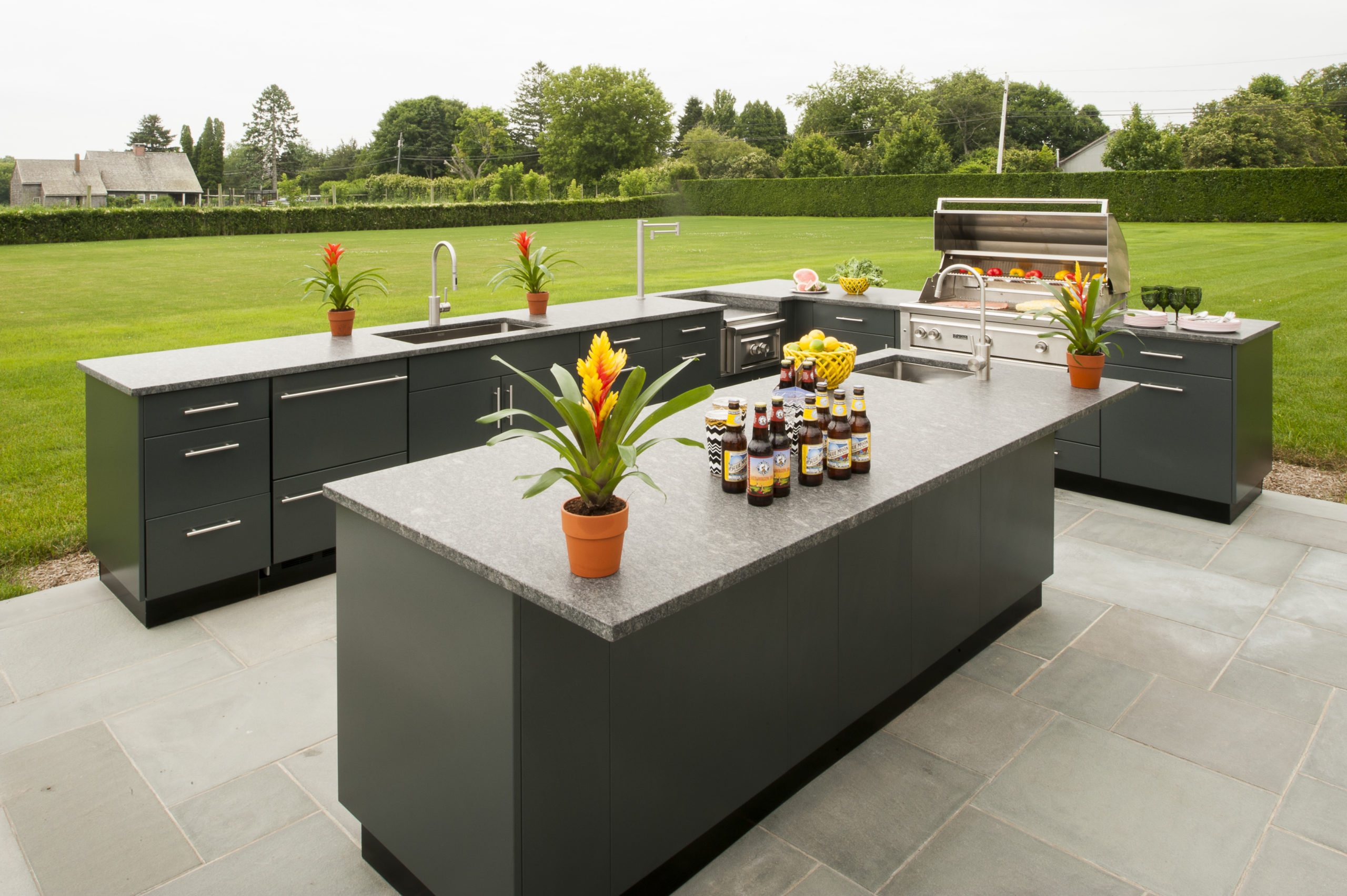
Credit: https://trex-outdoorkitchens.com/
Cost Considerations
When it comes to deciding on the best surface for an outdoor kitchen, cost is always a factor. Depending on the type of material used, there can be a significant difference in the price of a complete outdoor kitchen. Natural stone and concrete, for example, are two of the most popular materials used in outdoor kitchens, and they can range in price from $15 to $35 per square foot. Other materials, such as stainless steel, can be more expensive, but they offer superior durability and are a great choice for areas with high humidity. Additionally, outdoor kitchens should include features such as a sink, countertop, and grill, and these can add to the overall cost. When budgeting for an outdoor kitchen, it is important to factor in the cost of these features. Ultimately, the best surface for an outdoor kitchen is the one that fits within the available budget and offers the desired durability and style.
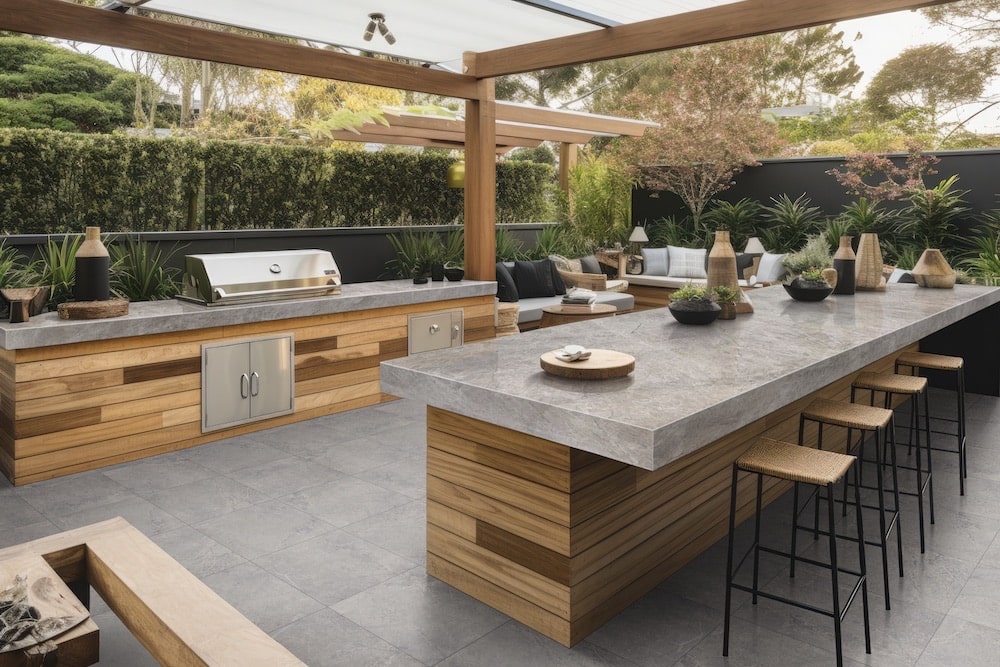
Maintenance Requirements
When it comes to outdoor kitchen surfaces, maintenance requirements should be a top priority in your selection process. Whether you opt for granite, stainless steel, concrete, or another material, you should consider how frequently you will need to clean and maintain the surface. Granite is an excellent choice for outdoor kitchens due to its durability and resistance to heat, but it will require periodic sealing and polishing to maintain its long-term beauty. Stainless steel is also a popular choice for outdoor kitchens, as it is resistant to corrosion and easy to clean. However, stainless steel can show fingerprints and smudges easily and may require regular polishing to maintain its luster. Concrete is another top option, as it is extremely durable and available in a variety of colors and textures. While concrete is easy to clean, it can be prone to cracking and will need regular sealing and resealing. Ultimately, the best surface for your outdoor kitchen will depend on your specific needs, budget, and maintenance requirements.
Creating a Stylish Look
and Feel
Creating an outdoor kitchen with a stylish and inviting look is the perfect way to take your outdoor entertaining to the next level. Whether you’re planning a summer barbecue or hosting a more formal event, having an outdoor kitchen can be ideal. However, deciding on the best surface for your outdoor kitchen is an important part of the process.
There are a variety of materials to choose from, each with its unique characteristics. For example, natural stone can provide a classic, rustic feel, while concrete is a popular choice for modern outdoor kitchens. Brick is a timeless look that can be used to create an inviting atmosphere. Meanwhile, stainless steel and composite materials are great choices for contemporary outdoor kitchens.
No matter what material you choose, it’s important to consider durability, cost, and maintenance when selecting the best surface for your outdoor kitchen. Natural stone and other porous materials require sealing to help protect them from the elements, while stainless steel and composite materials are easy to maintain. Ultimately, the best surface will depend on your individual needs and preferences.
Design Tips
For An Outdoor Kitchen
Having an outdoor kitchen is a great way to add a unique touch to your backyard. Designing an outdoor kitchen can be both exciting and daunting. With so many options to choose from, it can be hard to figure out the best surface for an outdoor kitchen. Whether you’re looking for a traditional or modern look, there are a few key considerations to make when choosing the right material for your outdoor kitchen.
When selecting a surface, durability is the first factor to consider. Outdoor kitchens are exposed to the elements and must stand up to the sun, rain, wind, and extreme temperatures. Natural stone, such as granite or slate, is often the most durable option for outdoor kitchen surfaces, but it can be expensive. If you’re looking for a more affordable option, concrete is a great choice for outdoor kitchens. It’s strong, long-lasting, and available in a variety of colors and textures.
When choosing an outdoor kitchen surface, it’s also important to think about how the material will look and feel. For a classic look, brick is an excellent option. It’s strong, easy to clean, and it adds a touch of warmth to any outdoor kitchen. If you want a more modern look, stainless steel is an excellent choice. It’s durable, sleek, and easy to clean.
No matter which surface you choose for your outdoor kitchen, it’s important to make sure it’s properly sealed. Sealing your outdoor kitchen surface will help protect it from the elements and keep it looking great for years to come. With the right surface and proper maintenance, your outdoor kitchen will be an enjoyable outdoor living space for years to come.
Resources for Further Information
When considering the best surface for an outdoor kitchen, finding the right information is essential. To ensure you make the best decision for your outdoor space, here are some resources for further information.
The Outdoor Kitchen Designers Network provides expert advice and guidance on outdoor kitchen surfaces. They can help you find the best surface for your specifications, while also helping you to make sure your outdoor kitchen is safe and compliant with local regulations.
For a more in-depth look at outdoor kitchen surfaces, Houzz has a great selection of articles written by experienced outdoor kitchen designers. From advice on choosing durable materials to tips on maintaining your outdoor kitchen, they provide valuable insight into creating the perfect surface for your outdoor kitchen.
The National Association of Home Builders also offers comprehensive information about outdoor kitchen surfaces. They cover everything from choosing the right material to determining the best way to install the surface.
For a closer look at the different types of outdoor kitchen surfaces, Consumer Reports provides ratings and reviews on various surfaces. They compare the pros and cons of each surface, so you can make an informed decision.
Finally, if you want to learn more about the installation process, DIY Network has a great selection of articles and videos. They provide step-by-step instructions, so you can make sure your outdoor kitchen is properly installed.
By doing your research and exploring the available resources, you can find the best surface for your outdoor kitchen. With the right information, you can create the perfect outdoor cooking space you’ve been dreaming about.
FAQs About the What Is The Best Surface For An Outdoor Kitchen?
1. What type of surface is best for an outdoor kitchen?
A: The best type of surface for an outdoor kitchen is one that is durable and waterproof, such as concrete, pavers, or granite.
2. How can I protect my outdoor kitchen from the elements?
A: An outdoor kitchen should be covered with a waterproof awning or outdoor curtains to protect it from rain and sun. Additionally, it should be equipped with a high-quality outdoor kitchen cover to keep the surfaces clean and dry.
3. Are there any special considerations for an outdoor kitchen?
A: Yes, it’s important to take into account the amount of sunlight, wind, and rain that your outdoor kitchen will be exposed to. Additionally, it’s important to consider the type of surface that will best suit your outdoor kitchen.
Conclusion
The best surface for an outdoor kitchen depends on your individual needs and preferences. There are many types of outdoor kitchen surfaces to choose from, such as concrete, stone, tile, and metal. Each has its benefits and drawbacks, so consider the climate of your area and your budget before making a decision. With the right materials, an outdoor kitchen can be an enjoyable and practical addition to your home.

